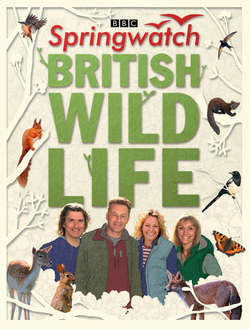Читать книгу Springwatch British Wildlife: Accompanies the BBC 2 TV series - Stephen Moss - Страница 20
ОглавлениеSwift, Swallow & Martins
©Duncan Usher/Minden Pictures/FLPA
House martins and swallows regularly gather on telegraph wires in early autumn as they prepare to migrate south to Africa.
These four summer visitors from Africa are among our most familiar breeding birds, even though they spend less than half the year with us. As they return each spring to nest in our cities, towns and villages, it is hard to believe that these tiny creatures – each of them weighing barely 30 grams (an ounce) – have travelled all the way from Africa, a distance of up to 10,000 km (6,000 miles).
Like all migrants, these birds make these journeys across the globe to take advantage of the abundant food supply available in the long days of the northern summer – in their case, billions of flying insects, which they catch on the wing to feed themselves and their hungry broods of young.
We might justifiably wonder why they don’t stay put in Africa all year round, but if they did so, they would have to compete with the numerous resident species of that vast continent. By heading north, they have a greater chance of surviving and raising a family than if they stayed where they were, despite the many hazards of such a long and arduous journey
The first of the quartet to return to our shores is generally the sand martin, which usually arrives sometime in the second half of March, though early birds do occasionally get here in February. Being birds of watery habitats, they usually head straight for lakes and reservoirs, where they can feed and replenish their lost energy on the few flying insects that are beginning to emerge.
Swallows and house martins return in early April: swallows mainly to farmyards, and house martins to villages, towns and suburbs, where they build their cup-shaped nests under the eaves of our homes. Swifts – which although superficially similar are quite unrelated to swallows and martins – are the last to arrive, generally returning to our towns and cities in the last week of April and the first week of May. They are also the first to leave, mostly gone by mid-August, while the others stay until September or even October.
Telling these four species apart is easier than you might think, provided you get good views. Swifts are the most distinctive, being completely sooty-black, and with narrow, scythe-shaped wings and a shortish, pointed tail. Swallows are the most graceful of the quartet, with long, swept-back wings and a long, forked tail; they are dark blue above and pale below, with a brick-red throat. The two species of martin are compact little birds with short, forked tails and triangular-shaped wings. Sand martins are brown above and white below, with a brown band across the chest, while house martins are dark blue above and white below, with a very distinctive white rump.
Although these are among our most familiar summer visitors, our knowledge of them when they leave our shores and head south to Africa varies considerably. Swallows gather in huge roosts – sometimes over a million birds strong – in reed beds throughout sub-Saharan Africa. But the other three species tend to be solitary in habit, making them far harder to find in this vast continent. Over the past century or so, more than 320,000 house martins have been ringed in Britain, yet in all that time just one has been found in Africa. Soon, however, the ability to track birds by using tiny GPS devices will hopefully reveal where this familiar little bird spends the half-year when it is away from us.
The swift is the undisputed aerial master of all the world’s birds. Once the chicks fledge and leave their nest, they will fly back and forth to Africa up to four times before they finally make landfall again to breed. Apart from when they are nesting, swifts spend their entire lives airborne: feeding, sleeping and even mating on the wing.
©Bill Coster/FLPA
©Robin Chittenden/FLPA
©Paul Sawer/FLPA
Despite their superficial similarity, swifts are entirely unrelated to swallows and martins.
